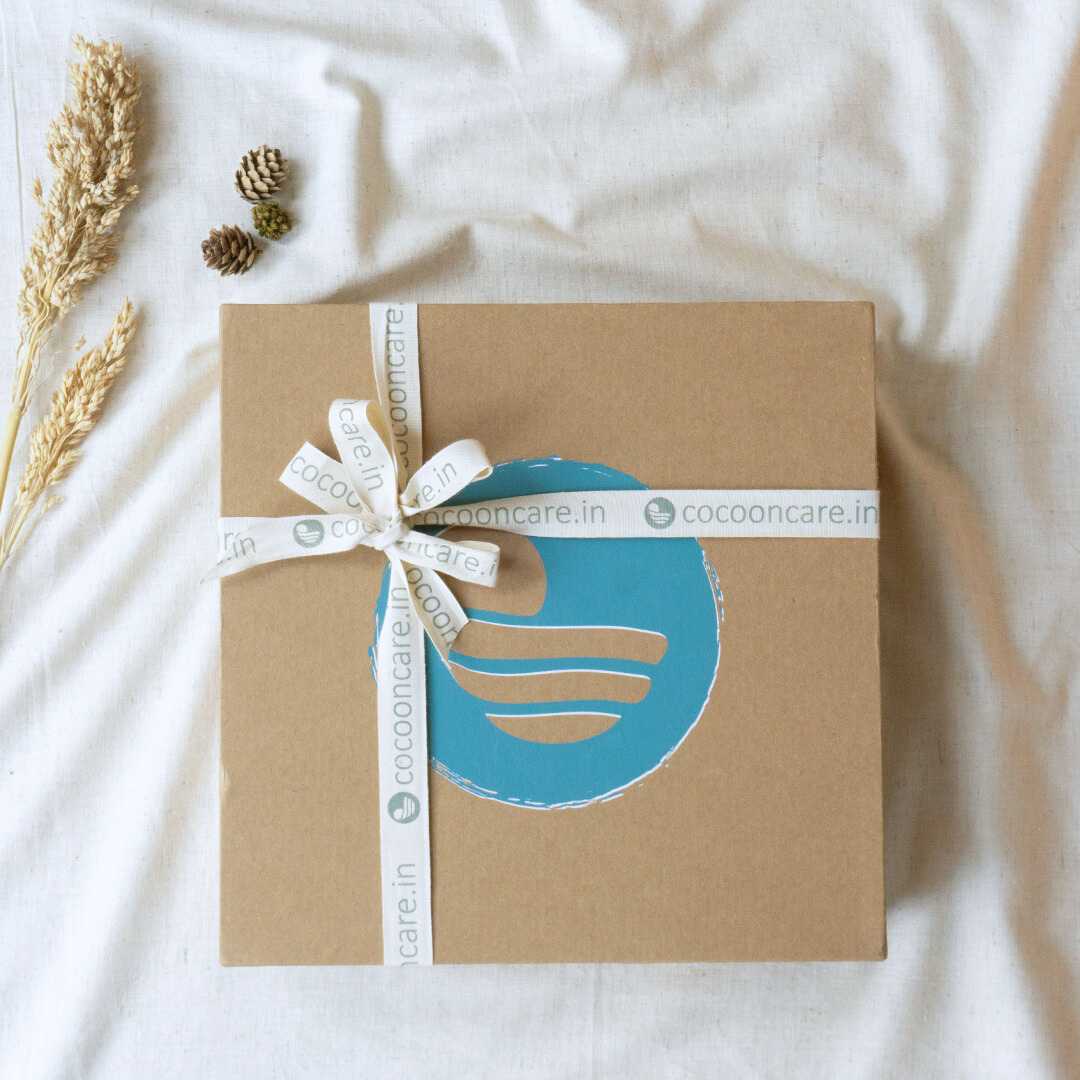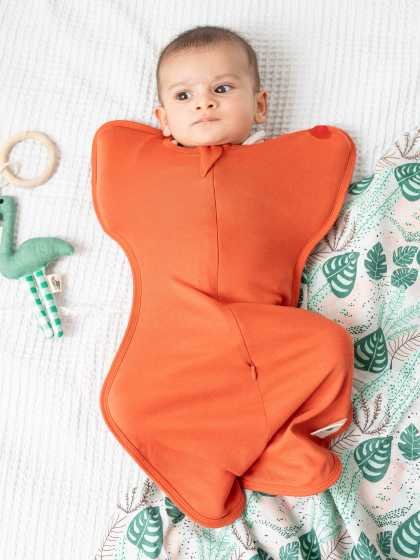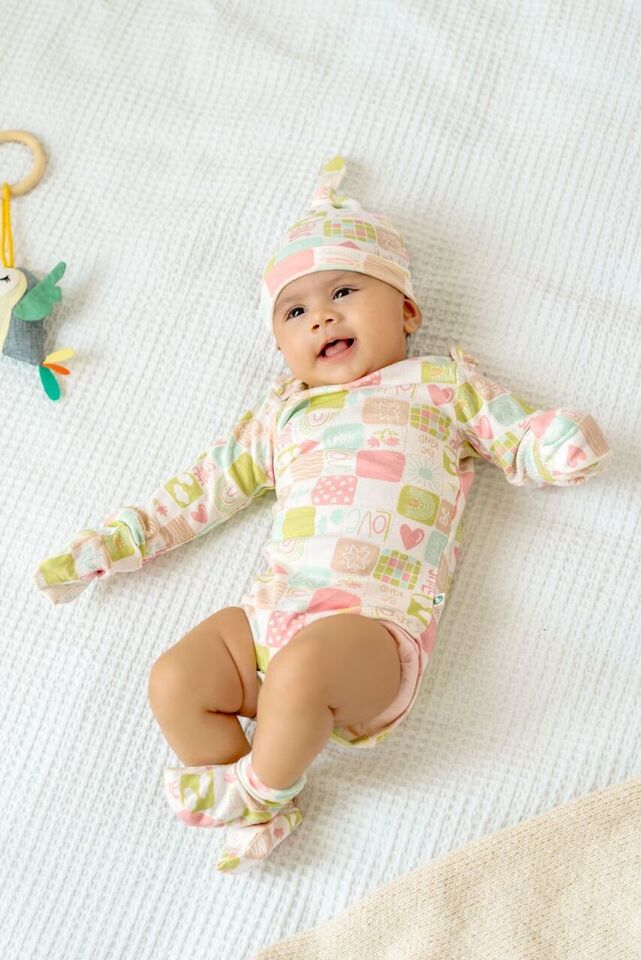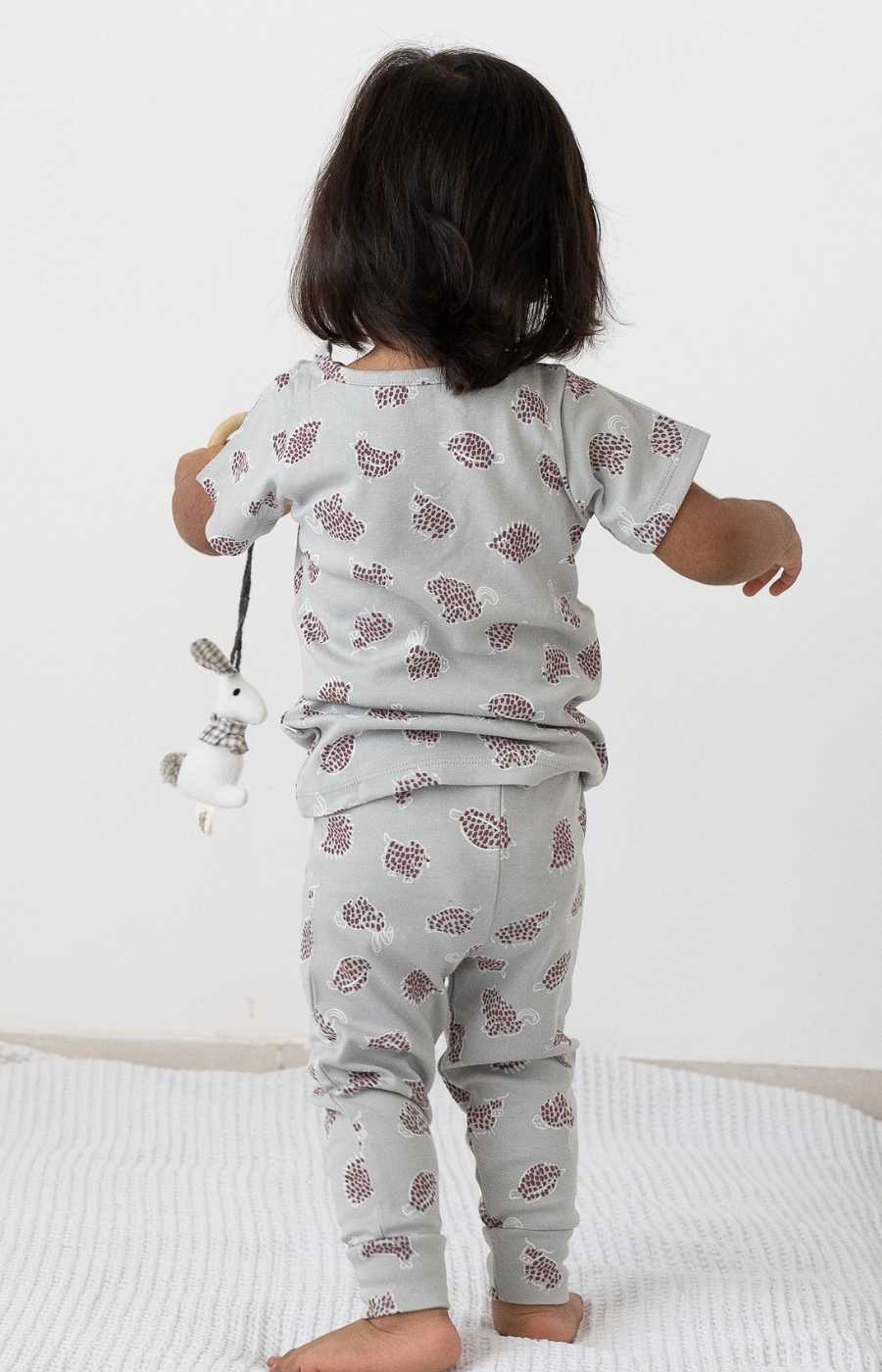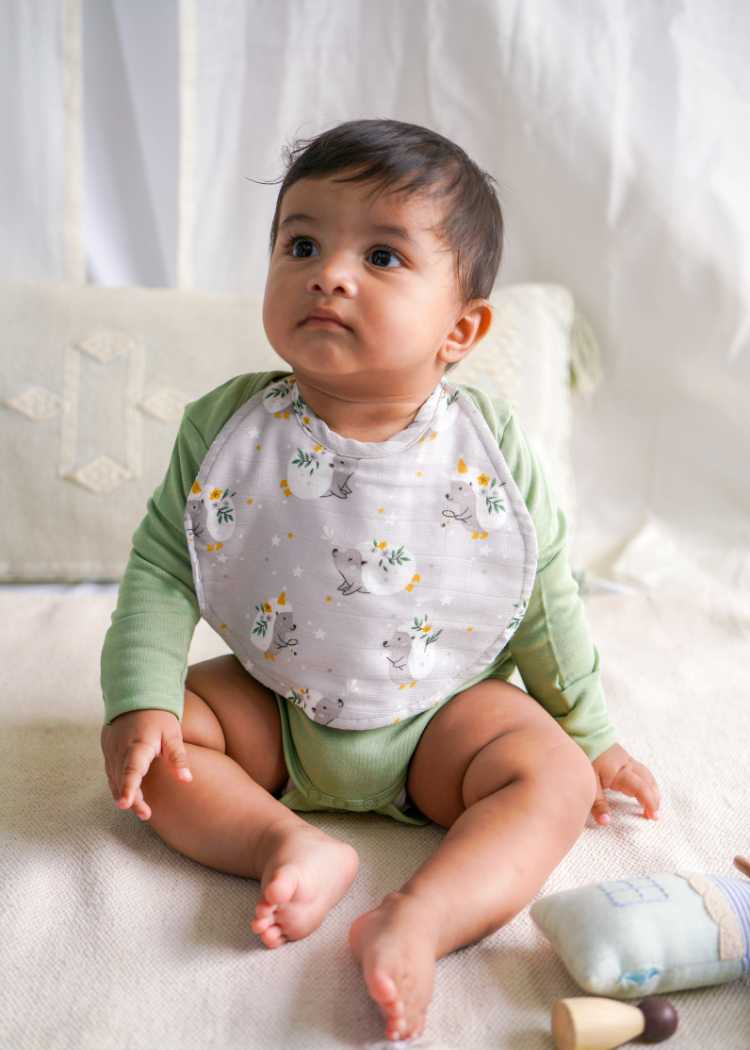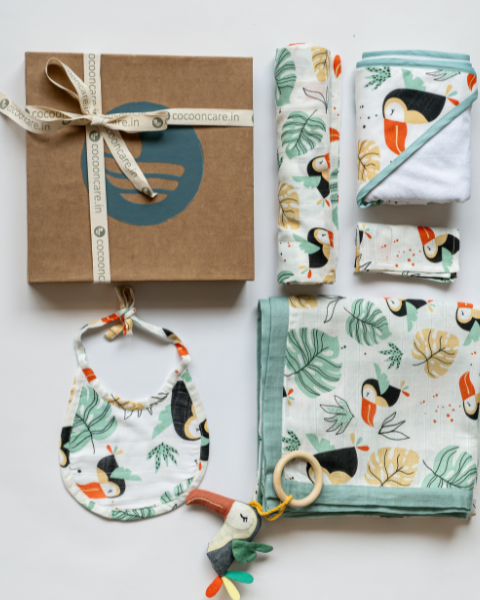You can almost always tell if a parent is acting in a desperate and sleep-deprived manner if they choose a recognized dangerous sleep method. Everyone dreams of putting their infant sleep in bed in a calm, undisturbed cot and watching them slumber for hours. But after nine months in a tiny, cozy womb—that's usually not going to happen. For this reason, many parents try to catch some shut-eye by using methods like co-sleeping, baby swings, or sleeping pods.
The popularity of sleeping pods for newborn sleep in bed has skyrocketed, with polls showing that 41% of new parents want to utilize one. Babies are not often placed in cribs or other separate cots in Indian households. Co-sleeping is expected because of the cultural value of strong family ties and shared sleeping quarters.
How to make your newborn sleep in bed safely
The ideal times to utilize a sleeping pod for newborn sleep in bed with a baby are during playing, tummy time, diaper changes, and supervised naps. They're great for keeping your little one occupied and safe while you tend to a few household tasks.
To ensure safe usage, consider the following newborn sleep advice/newborn sleep tips:
- Set the pod down on a level, secure surface inside the same room where you are. You should never leave your youngster alone.
- They should get as near the bottom bumper as they can get their feet, but make sure there's plenty of space for their head to move about.
- For tummy time, put their arms outstretched before the bumper and lie them on their back to play. When they can grip a toy, give them those suitable for their age.
- Do not use sleep pods for newborn baby sleep when you are asleep. There is a danger of suffocation from the soft and cushioned bumpers and overheating if you leave your sleeping infant alone for lengthy periods.
4 Important Newborn Sleeping Tips to Let Them Sleep Safely
When it comes to your baby's sleeping habits, be sure to follow these extra safe newborn sleep advice/newborn sleep tips for your infant sleep in bed:
-
Rest the infant on their back
From the initial days to the moment the baby turns one, you should always lay them down on a hard, flat surface for naps and newborn baby sleep. The danger of sudden infant death syndrome (SIDS), as well as overheating and asphyxia, rises when newborns sleep on their bellies.
If your baby can independently turn over in their cot from stomach to back and back to stomach as they sleep, that's perfectly normal. Carefully watch them since rolling over usually happens between three and six months, but it may happen sooner or later.
Your baby is likely reacting to the environment by rolling onto other sides. By the time baby is one month old, he probably won't be able to do it anymore.
-
The baby has to be left alone in the bassinet or cot
The baby needs to sleep on her back without any distractions, such as cushions, blankets, stuffed animals, or bumpers. When your little one is ready to transition from a cot to a toddler bed—ideally between the ages of 2 and 3—you may bring out the pillow and blanket.
A wearable blanket, sometimes known as a sleep sack, might alleviate nighttime colds if you're concerned about your baby's temperature during newborn baby sleep
-
Be careful not to overheat your infant
When putting an infant to sleep in bed, what clothes are best? Keeping things simple is the safest bet. Instead of socks, hats, and other accessories, dress your infant in a base layer, such as a one-piece sleeper. A swaddle wrap or a sleep sack may be used in place of a blanket. She will be adequately warmed but not overheated. Babies should never be wrapped in blankets, sleep sacks, or swaddles that include weights.
Temperatures between 68 and 72 degrees Fahrenheit are ideal for room temperature. Check the back of your baby's neck to see if she's becoming too hot. She must be pretty hot if she's perspiring.
-
You Must Place Your Infant in a Smoke-Free Zone
Prevent sudden infant death syndrome (SIDS) by keeping your newborn away from cigarette smoke. Babies should not be able to reach anything in their cribs for safe sleep for newborns. Babies are in danger of suffocation and strangulation if they get their hands on cables (such as those from a lamp or your baby monitor), drapes, or anything else.
When your baby is around 4 to 6 months old, or when she starts pulling herself onto her hands and knees, remove the mobile from the crib. It's perfectly OK to hang a mobile above the crib, but make sure it's about 12 inches above the cot.
Accessories for a safe and sound sleep beyond cribs
Babies need more than just cribs for a restful night's sleep—they also need carefully chosen accessories. Swaddling blankets provide a sense of safety and warmth by recreating the snugness of a baby's womb. Baby sleeping bags provide warmth without the risk of bedding that might come free.
A calming atmosphere for sleep may be achieved with the help of white noise machines or soft lullabies for newborns to sleep in the bed. Infants' limbs are better able to circulate air and stay untangled with breathable mesh cot liners.
Furthermore, parents can rest easy knowing they can keep a close check on their children with the help of a dependable baby monitor with video capabilities. These things help create an ideal sleeping environment for babies, which benefits both moms and dads.
Conclusion
Give your little one an enjoyable tummy time experience by placing their nest on the front bumper while they stretch their arms out for safe sleeping of newborns. This helps develop essential motor skills needed to walk, stand and reach for objects in front of them. Unlike hard surfaces which might not provide as enjoyable tummy time sessions!
No matter where the baby sleeps - be it on the floor, sofa, or bed, pods can easily be transported between spaces to keep the baby safe. When placing elevated surfaces near babies be wary as this increases risk of them rolling off. Also, ensure there are no pets or siblings being run over while rolling. Pod sizes depend upon age; infants to toddlers will see large and small models alike. Sleep pods come in all different shapes and sizes.
Hope this blog by Cocoon Care will help you. You can also check out baby essentials in soft bamboo fabric at Cocoon Care.
FAQs
Q. Are sleeping pods safe for newborns?
Due to decreased ventilation, overheating is more easily caused. Newborns must have access to a secure surface so they may slumber safely while napping.
Q. Is it safe for newborns to use sleeping bags?
Baby sleeping bags offer an easy, safe way to ensure newborns remain warm without risking sheet snagging. For maximum safety and comfort, be sure to purchase an appropriately sized sleeping bag made with material appropriate to their size needs and make.
Q. What is the safest way to put a newborn to sleep?
Infants should only sleep on their backs on a hard mattress without pillows or blankets to ensure maximum safety. Be mindful that temperatures in their bedroom remain at a comfortable level so as to not become overheated when lying them down for sleep. Creating an environment conducive to safe sleeping will only ensure good nights all around.

